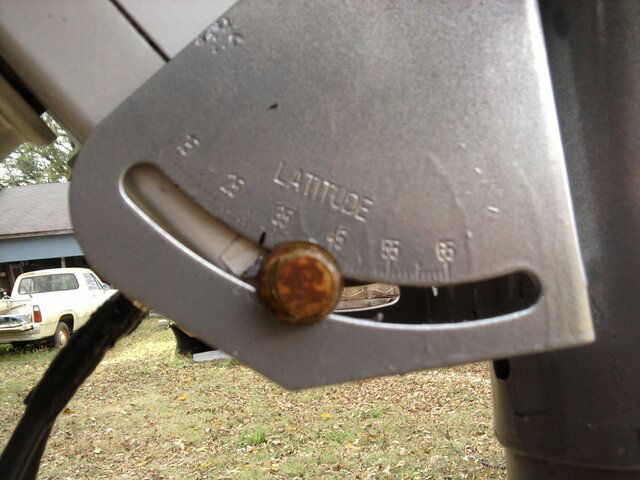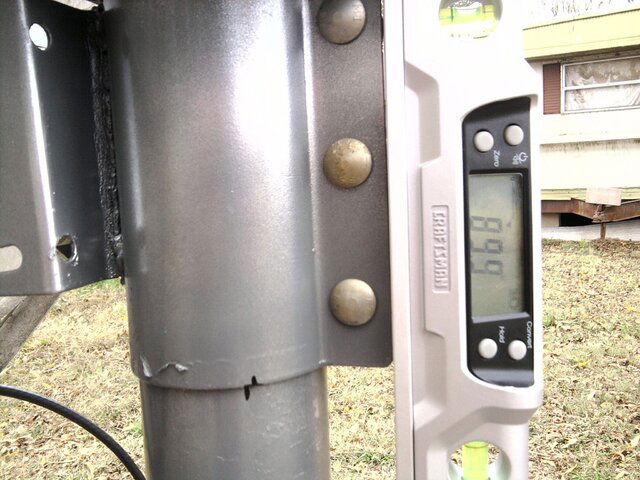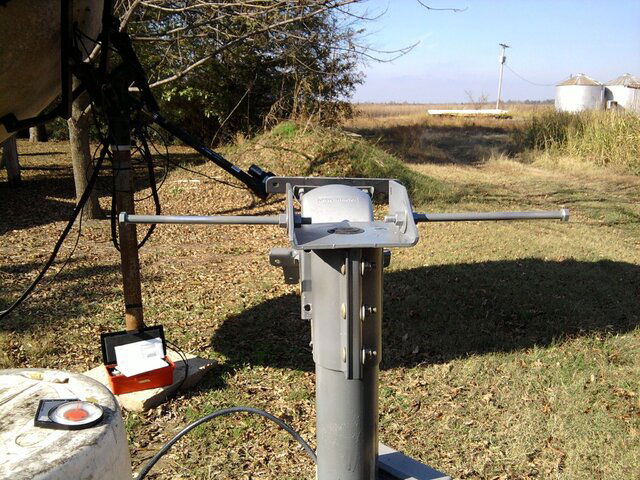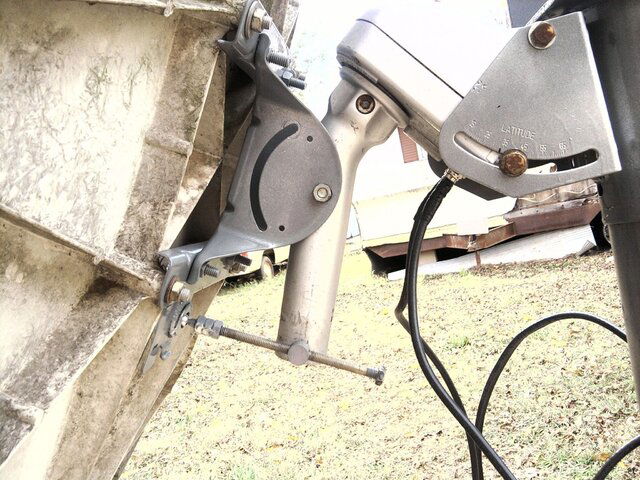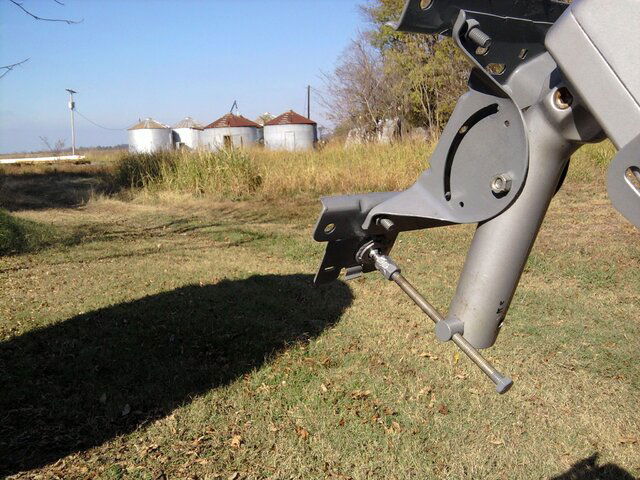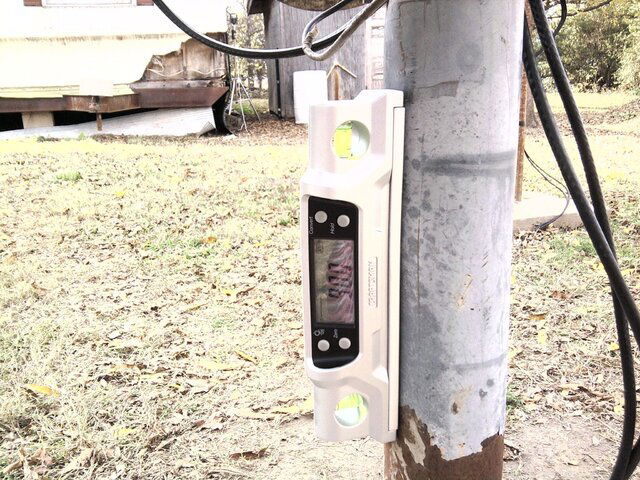Dish Motor Mount Situation
This problem is directed at RADAR but if any of you guys can help figure this out, I welcome any suggestions.
I recently created a mount for my SG2100 and the Primestar 1.2 dish. I used parts from a old Primestar dish (Mount cap that sides onto the pole), the adjusting screw used by Primestar to adjust the elevation of dish, the motor mount bracket of the SG2100, and some other odds and ends.
As stated earlier, I did this so I could adjust the Azimuth and elevation of the dish with ease. I always hated using the U bolts that the SG2100 uses because it is a pain to set the Azimuth while the whole thing wanted to wrestle it way down the pole and the twisting of the motor mount. Yall know the drill.
I took the motor mount bracket, remove the U bolts and after carefully centering it to the Primestar mount cap, had it welded. Now all I would have to do is to untighten the three bolts, and with the handles I had installed at the top of the cap, gently turn the dish east and west to find a satellite during setup, Work great!!!

Then I created a treaded rod system that is bolted to the side of the SG2100 tube and mounted on the dish frame. I can adjust the elevation of the dish using a rachet wrench or just a open end wrench, That work great too!!!

With the pictures I posted here you will see the results.
I am having problems aligning the dish.
Radar, I have pictures showing how plumb the pole is. Everything is plumb except for the SG2100 motor mount bracket that is welded to the dish mount. Apparently the person who welded the bracket to the mount cap bumped it causing it to be off with the level. The digital level shows that the bracket is like 86 degrees. The mount cap on the pole is leveled with the pole.
I noticed that when I set the latitude on the SG2100 bracket (34 degrees) the other side should be resting at 57 degrees. But it is not. It was like that BEFORE I created this project. I believe that the bracket is twisted, It was like that back when I bought the Moteck SG2100.
So I figured I have a bracket that may not be welded level with the mount cap and that the bracket was twisted.
Radar, when I went to your guide on installing the motorized dish systems, you have mentioned about the possibilities of the motor bracket may be flawed,
Look at these pictures. Is it possible to work around all this so I can properly track the arc, or am I going to have to redo the bracket/mount part?
I am still having a booger of a time tracking the arc.
Quick example: I can get the eastern satellite locked in during setup at dish. Using USAL I would go to most western satellite. I go east/west trying to get the satellite. Nothing. But when I use my elevation rod to adjust, I would get it in. I then go back to previous east satellite, would lose it. I adjust the elevation again to get back the satellite. I get it back. Go back to the west satellite, here I go again, I tried the azimuth method. Don't work.
What do you think?


